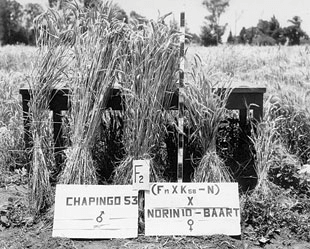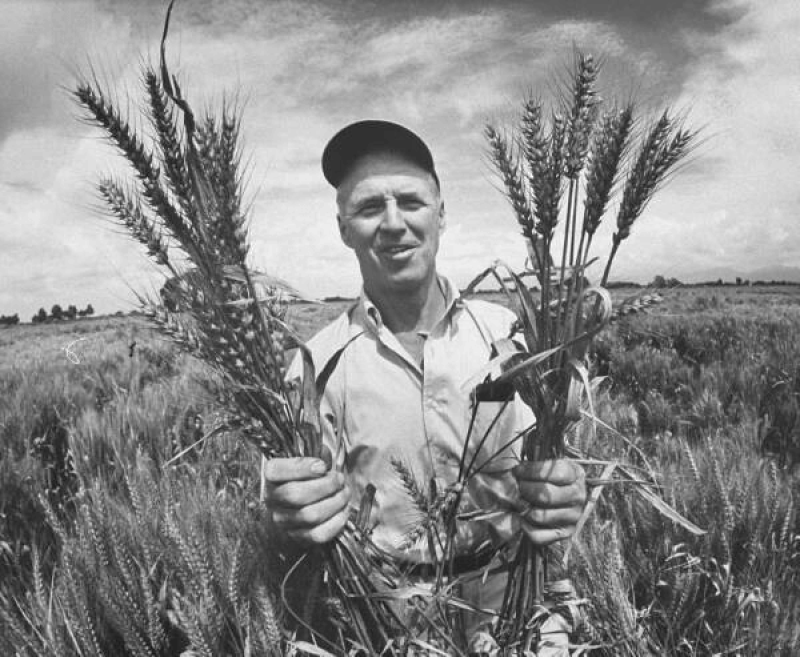After the Second World War, regional famines began to occur. Believing that increasing agricultural performance can be the solution to the problem, individuals and organizations have rolled up their sleeves to develop new varieties that are resistant to diseases and pests and are highly productive, as this can be overcome with innovations in agriculture. Irrigation, spraying, and fertilization techniques were developed. Improvements were made in the mechanization of sowing-planting, harvesting-threshing works. The combination of all these activities was a revolution for agriculture. Yield and therefore agricultural production increased, and agricultural production, which could not feed three billion people in the 1960s, became enough to feed six billion in the 2000s. That’s what happened thanks to the Green Revolution.
Even during the second world war, Mexico began to seek to convert dry farmland in the northwest of the country to irrigated agriculture to solve the problem of not self-sufficient food production. A consortium including the United Nations (FAO), Rockefeller, and Ford Foundations was formed. And in 1943, a research institute was established, which would later become the “International Corn and Wheat Improvement Center (CIMMYT)”. Here, some new agronomic options have been started to be explored, as well as the development of short, high-yielding cultivars that are resistant to diseases and pests and suitable for fertilizer use.
During the green revolution period of 1950-1980, improvement studies in wheat, rice, and maize continued in many other plants. While the plant height was shortened by hybridization methods in wheat and paddy, hybrid technology was used in maize.
A Japanese dwarf wheat variety (Norin10) was used as a genitor for shortening plant height in wheat. With those short varieties that were developed, the yield increased and the wheat importer Mexico became an exporter. While the “Mexican wheat” brought to Turkey in the 1960s could not show sufficient resistance to the disease species and breeds of Anatolian ecology, it also fell behind in consumer preferences and could not find much cultivation area in our country.

Thanks to the studies on shortening the length of wheat applied in India and Pakistan in the following years, these countries were able to enter the group of countries that are self-sufficient in wheat.
At this stage, Norman Borlaug, prominent in Mexican wheat breeding, was brought to the management of the International Corn and Wheat Improvement Center (CIMMYT) in Mexico between 1964-1979. Borlaug, who argued that the hunger problem in the world would be eliminated with biotechnology, was awarded the Nobel Peace Prize in 1970 for his contributions to the Green Revolution, the leading actor in food production in Asia and Latin America.
The short IR8 rice variety was developed from hybrids of an Indonesian variety called “Peta” and a Chinese variety called “Dee-geo-woo-gen”. This variety has made the Philippines, where it was developed, and many other neighboring countries an exporter while being an importer of rice.
In the 1960s, another development in crop production was in the hybrid-hybrid breeding of alien plants such as maize and sunflower. Although discovered in the 1920s, this invention, which became widespread in the 1960s, is based on the high performance observed in the offspring of different parents (F1- first generations). The high productivity of two genotypes determined from thousands of genotypes has been put into practice and today the yield per decare of corn has exceeded 1000 kg.
The aforementioned hybrid event has also been tried on self-pollinated plants and has achieved great success in rice today. So much so that thanks to the new varieties developed with the help of this technique, rice importer China has become an exporter. The cultivation area of the hybrid varieties in question covers 56% of the total cultivation area today.
An International Agricultural Research Advisory Group (CGIAR) was established with FAO and other top umbrella organizations under the leadership of the World Bank to ensure that all countries of the world benefit from the green revolution and that the results of the revolution are sustainable. This organization created 18 subject-oriented research institutes. One of them is the “International Center for Agricultural Research in Arid Areas” (ICARDA), which was established in Syria in 1977 and is currently working in Lebanon.
Let’s take a look at some of the other striking results captured by the green revolution:
- Compared to pre-revolution, today’s people can consume 25% more calories;
- Between 1950 and 1984 alone, world grain production increased by approximately 160%;
- Striking reductions in child mortality rates have been achieved in 37 countries;
- Beyond these positive effects and contributions, the Green Revolution has also been the target of some criticism;
- Increasing prosperity, predominantly in developing countries, has triggered increases in birth rates;
- Quality factors such as protein, mineral, and vitamin were neglected in the varieties bred during the Revolution;
- During the revolution, Africa was virtually ignored.
Nazimi Açıkgöz graduated from Ankara University in 1964 and earned his Ph D. degree at Munich Technical University in 1972. He is now a freelance writer. Find Nazimi on Twitter @nazimiacikgoz































